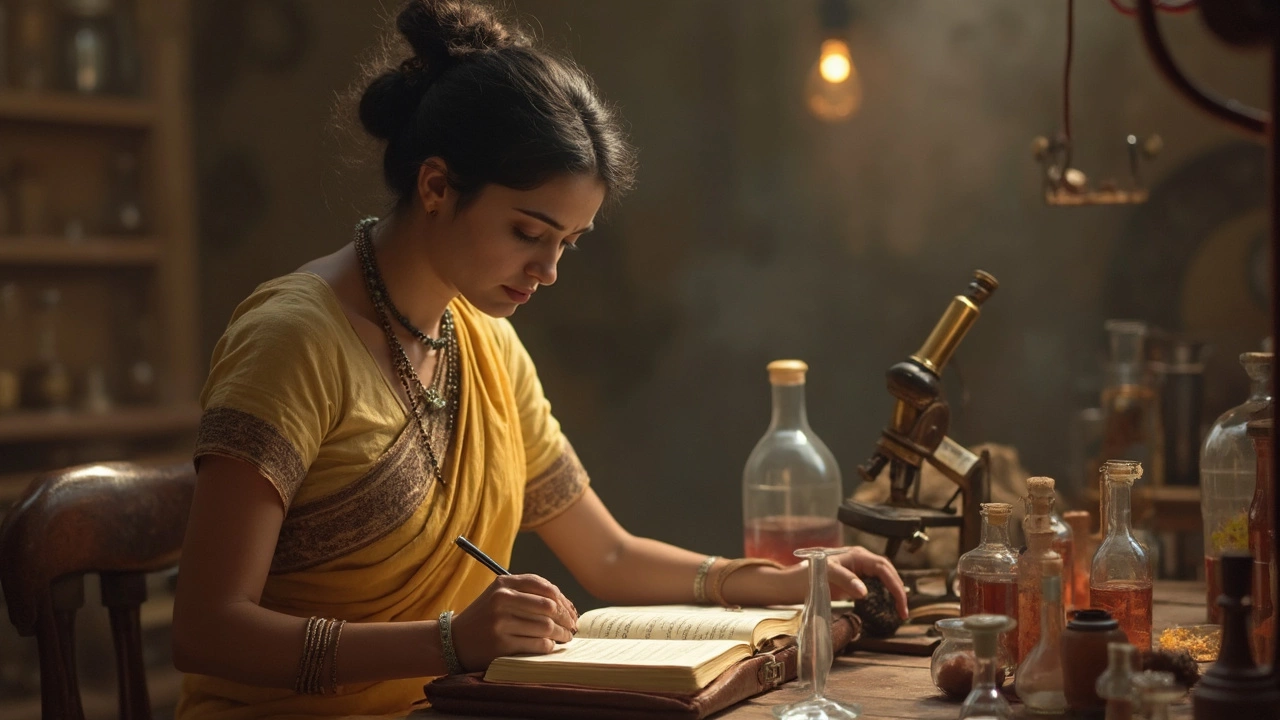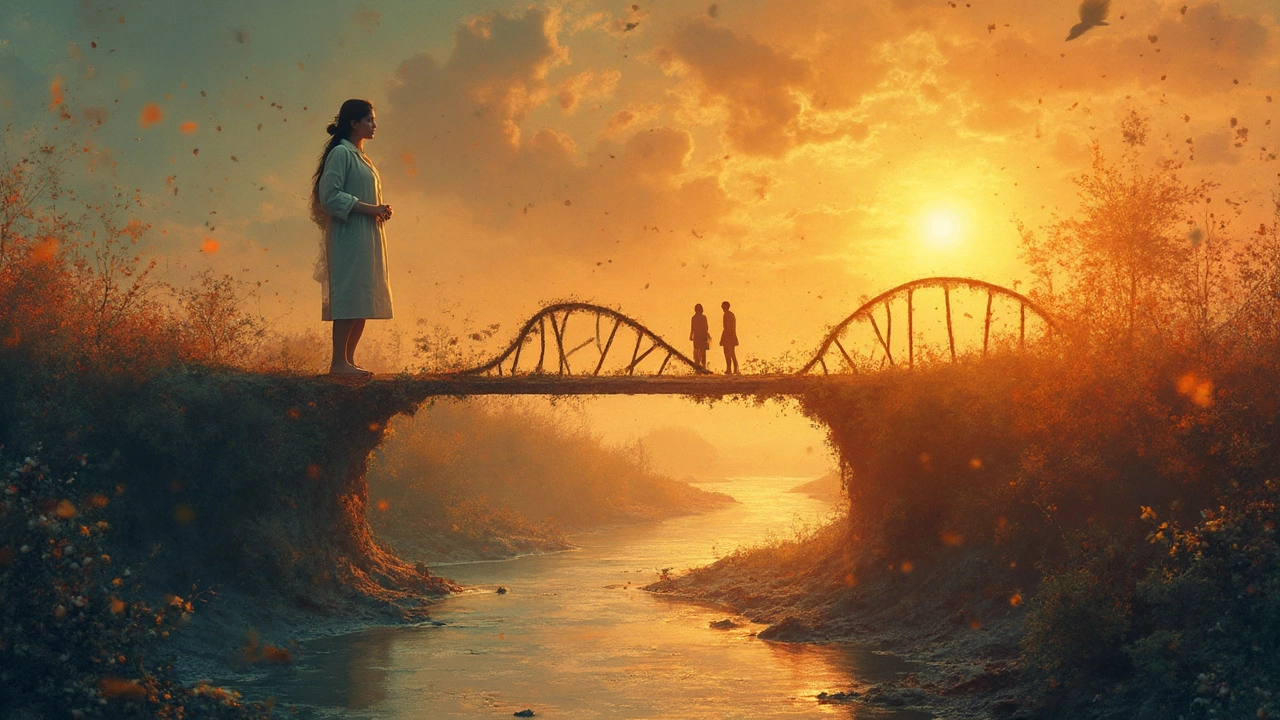First Woman in Biotechnology: Breaking Ground and Making History
 Jun, 6 2025
Jun, 6 2025
When you think about big breakthroughs in science, most people picture guys in lab coats. But women have been breaking the mold for generations, even if you don’t hear their names in school. Take biotechnology—everyone talks about CRISPR and genetically modified crops, but who kicked off the whole thing? The answer is more complicated (and more exciting) than you might think.
Rosalind Franklin’s name gets tossed around a lot. She’s mostly credited with the DNA double helix, but she did a lot more than snap X-rays of molecules. Her careful research helped launch the era of molecular biology, which is the backbone of modern biotechnology. Franklin’s findings shaped how we do everything from gene editing to vaccine development today.
So if you’re digging into the roots of biotech, it’s not just about facts on a timeline. It’s about guts, curiosity, and smashing through the barriers that told women, "Science isn’t for you." And if you or your kids ever wondered who started it for women in biotech, you’re about to get the real story—no sugarcoating.
- Who Really Was the First Woman in Biotechnology?
- How Her Work Changed Science
- The Struggles and Setbacks She Faced
- Myths, Mix-Ups, and Surprises
- Why Her Legacy Matters for Biotech Today
Who Really Was the First Woman in Biotechnology?
The first thing to know—there’s no giant trophy that says “First Woman in Biotechnology.” It’s not like running a race. But if you ask experts, most point right to Rosalind Franklin. She was a British scientist working in the 1940s and 1950s. Franklin’s real claim to fame? She made DNA visible for the first time with her remarkable X-ray pictures. Without her crystal-clear ‘Photo 51,’ Watson and Crick wouldn’t have decoded DNA’s structure when they did.
But DNA wasn’t her only focus. She worked on viruses too, which is a big deal—a lot of modern biotech revolves around using or designing viruses for good (like gene therapy or vaccines). Her work set the foundation for both genetics and virology, two huge chunks of biotechnology today.
If you’re wondering whether she was literally the first, here are a couple of things to know:
- Franklin’s career started just when molecular biology (the heart of biotech) was exploding—she was at King’s College London in 1951, right in the thick of it.
- She led projects—back then, leading a lab as a woman was pretty much unheard of. Almost all her male colleagues got more recognition, but she kept pushing forward.
- There were women in biology before Franklin, but they didn’t work with the molecules that control life, which is the core of biotech.
If you like numbers, check out this table showing when the major players started working in this space:
| Name | Start Year in Biotech | Main Area |
|---|---|---|
| Rosalind Franklin | 1951 | X-ray Crystallography (DNA, Viruses) |
| Barbara McClintock | 1940s (Genetics, USA) | Jumping Genes (Maize Genetics) |
| Ada Yonath | 1970s | Ribosome Structure |
People sometimes bring up Barbara McClintock, who won a Nobel Prize for genetics. McClintock made huge discoveries too, but even she didn’t touch lab techniques that sparked the first biotech companies. Franklin’s X-ray work is what folks today recognize as the start of real biotech—she cracked open a whole new world.
So if you want a real “first” in the story, it’s Franklin—her findings and photos kicked off the biotech revolution we know now. My kid Isha once asked me why she’s not more famous in textbooks. Simple: she didn’t brag, and her male peers often took the spotlight. But science insiders? They know she kicked open the doors for everyone else.
How Her Work Changed Science
Franklin’s impact on biotechnology history is hard to overstate. Her research into DNA wasn’t just one more experiment—it was the foundation for almost everything we know about genetics today. She used a technique called X-ray crystallography to get the first clear images of DNA’s structure. This wasn’t easy; the technology was finicky, and the math was brutal.
Before Franklin, scientists had lots of guesses about DNA’s shape, but nobody nailed it. Her famous "Photo 51" gave James Watson and Francis Crick the missing piece they needed. Even though they got most of the public glory, it was Franklin’s work that confirmed DNA had a double helix structure. That single discovery changed medicine, agriculture, and even criminal law—think about genetic testing and forensic labs.
Her research didn’t stop with DNA. She later moved on to study viruses, like tobacco mosaic virus. Her ideas about the structure of viruses are actually still used in vaccine development. Without her groundwork, things like COVID-19 mRNA vaccines would have taken a lot longer to roll out.
- Used X-ray crystallography to unlock molecular secrets
- Proved the double helix shape of DNA
- Pioneered virus structure research, helping future vaccines
If you want proof of how her work keeps showing up, check out these stats:
| Biotech Field | Impact from Franklin's Discoveries |
|---|---|
| Genetic Testing | Over 26 million people have taken at-home DNA tests since 2012 |
| Vaccines | Modern mRNA vaccine designs use principles she proved with viruses |
| Agriculture | Gene editing based on DNA understanding boosts crop yields by up to 20% |
Her story matters because it changed both who does science and how it’s done. Today, scientists of all backgrounds use tools and techniques Franklin helped invent. If you’re thinking about getting into science or guiding your kids, her legacy shows you don’t have to follow the crowd to make a difference.

The Struggles and Setbacks She Faced
If you look back at Rosalind Franklin’s life, it’s clear she dealt with way more than just hard science. It was the 1940s and 50s—most labs were boys’ clubs, and women were rarely in charge. Even as Franklin’s X-ray work was crucial for DNA research, her male colleagues at King’s College treated her like an outsider. She got stuck in a basement lab with poor equipment and wasn’t always kept in the loop about her own data being shared with others.
One of the most frustrating stories is how Rosalind Franklin’s famous Photo 51—her clear X-ray image of DNA—was shown to Watson and Crick without her full knowledge. That snapshot basically cracked open the mystery of DNA’s structure, but when they scooped the Nobel Prize, Franklin was left out. She died before her contribution was truly recognized, which means her name didn’t show up in the awards or heaps of textbooks for years.
Franklin also faced non-stop sexism in meetings and academic journals. Reviewers dismissed her ideas as too “theoretical,” even when she had solid evidence. She often had to argue, defend her data, and push to even get her papers published. And while juggling all this, she worked on viruses after her DNA research—breaking ground again, but still running up against the same old blocks.
What’s wild is that these struggles weren’t just isolated to her—they were baked into the entire system. Women in biotechnology and other sciences had to fight for every inch, every letter on a paper, every spot at a conference. If you imagine working your tail off, only to have someone else get the credit, you get a taste of what women like Franklin faced on the daily.
Myths, Mix-Ups, and Surprises
It’s easy to get tripped up by stories about the first woman in biotechnology. Some folks think Marie Curie was the big player here—she’s famous for her work on radioactivity, sure, but not for biotech. Others rattle off names like Barbara McClintock or even Ada Lovelace. Truth is, there’s no single title or award for “first.” Biotech didn’t become its own thing until well after the breakthroughs by early scientists who just wanted to figure out how stuff worked inside a cell.
Here’s a quick table to clear the air on who did what—and when they did it:
| Name | Main Achievement | Biotech Relevance | Fun Fact |
|---|---|---|---|
| Rosalind Franklin | DNA x-ray photos | Foundations of molecular biology | Her data was key for Watson & Crick |
| Barbara McClintock | Found jumping genes | Genetic engineering roots | She won the Nobel Prize in 1983 |
| Marie Curie | Radioactivity | Less tied to biotech science | First person to win two Nobel Prizes |
Plenty of people think Rosalind Franklin was ignored by her peers, which is only partly true. Back then, women had to fight just to get into the lab, let alone for any credit. Sure, she didn’t split the Nobel Prize with Watson, Crick, and Wilkins. What most don’t know: she never saw herself as sidelined and was respected by other scientists, especially after her work moved from King’s College to Birkbeck. She even made new headway on viruses before her death.
If you go searching for the “first,” you’ll find some surprises. Tech wasn’t even called “biotechnology” until 1919, when Károly Ereky in Hungary used the word to talk about using living things to make stuff. Most women in early science rarely got job titles or media time, so a lot of real pioneers got left off the lists or blended into bigger stories.
When reading up on these scientists, watch for hype or old tales that sound a bit too neat. Remember, science—especially back in the day—was messier than the history books make it look. Real people, real labs, and lots of hurdles.

Why Her Legacy Matters for Biotech Today
It’s wild to think how much today’s biotech work still leans on what Rosalind Franklin started. Her drive to make sense of DNA’s structure cracked open the field for everything from cancer research to COVID-19 vaccine development. Every time a scientist tweaks a gene or runs a DNA test, they’re building on her discoveries, whether they know it or not.
Here’s something cool: the first time scientists figured out how to edit genes in bacteria (which eventually led to CRISPR), they used methods based on Franklin’s X-ray diffraction work. They literally couldn’t see DNA clearly before her research. Today, stuff like genetically modified crops, gene therapy, and personalized medicine all trace back to that “aha” moment she helped deliver.
If you look at the actual impact, here’s what her legacy touches in biotech today:
- Fast COVID-19 vaccines: mRNA vaccines like Pfizer-BioNTech and Moderna rely on basic principles she found in RNA and DNA.
- Gene editing: Tools like CRISPR use her DNA models as a blueprint for finding the right spots in a strand.
- Cancer research: Many tumor tests use X-ray techniques she pioneered.
- Food security: Genetically modified crops wouldn’t be possible without her groundwork.
No surprise, women in biotech are still powering up labs around the world. The latest UK Biotech Industry Report (2024) showed women now hold 38% of senior research roles in the field—this wasn’t even close to reality back in Franklin’s day. Still, there’s work to do. Mentorship programs and scholarships, many in Franklin’s honor, keep popping up to get more young women into science.
| Biotech Area | Current Impact (2025) |
|---|---|
| DNA Sequencing | Over 2M human genomes sequenced using methods shaped by Franklin's research |
| mRNA Vaccines | 3B+ doses produced using RNA science |
| CRISPR Editing | More than 4,000 labs using CRISPR worldwide |
| Women in Senior Biotech Roles (UK) | 38% |
The next time you spit in a tube for a DNA test, track a pandemic, or eat food with better nutrition, you’re seeing first woman in biotechnology history in action. What’s even better? Now, kids like my daughter Isha see these role models everywhere. That’s a win we can all be proud of.